For most, being at home conjures feelings of safety, warmth, and security. After spending heaps of time, money, and effort buying or renting a home, people are often too exhausted to even begin thinking about how to prevent hazards or accidents.
The truth is, most mishaps at home can be easily prevented, which is why it's so important to take the necessary — and often fairly simple — measures to do so. This is especially the case for families with young children or seniors. The last thing you want is to be confronted with a dangerous situation and find that it is too late to do something about it.
Like many things, home safety begins with awareness. This guide is designed to help homeowners identify and reduce hazard risks in their residences. Specifically, we will go over top home hazards, methods for cultivating a safer home, household toxins, and the dangers that kids and older adults face.
Awareness alone is not enough to keep your family safe, but it will get you started. Once you are familiar with the various home hazards and how to prevent them, you can invest time and elbow grease to bring home safety to life.
Insight from Industry Experts
Before delving into the specifics on how to identify and prevent home hazards, let's see what industry experts have to say:
Shocking Statistics on Home Hazards
Preventable home hazards cause many injuries and deaths. In case you were wondering…
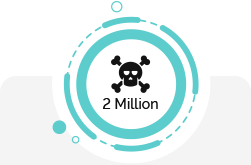 In 2018, more than 2 million poisoning incidents were reported to poison control centers nationwide.
In 2018, more than 2 million poisoning incidents were reported to poison control centers nationwide.Source: National Capital Poison Center
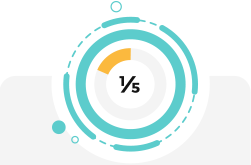 One of every five older adults who falls sustains a broken bone, head injury, or other serious injuries.
One of every five older adults who falls sustains a broken bone, head injury, or other serious injuries.Source: Centers for Disease Control and Prevention
 Choking is the USA's fourth-largest cause of accidental death. There were more than 5,000 victims in 2015.
Choking is the USA's fourth-largest cause of accidental death. There were more than 5,000 victims in 2015.Source: The National Safety Council

Most drownings among children ages 1 to 4 occur in home swimming pools.
Source: Centers for Disease Control and Prevention
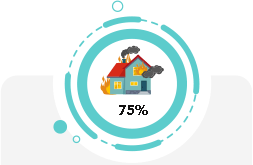 Home fires cause 75% of fire deaths and 73% of fire injuries.
Home fires cause 75% of fire deaths and 73% of fire injuries.Source: National Fire Protection Association
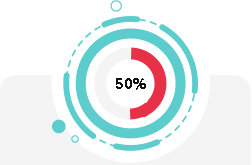 Falls account for half of accidental deaths in the home. Much of the time, these falls occur at ground level and not at an elevation such as a staircase.
Falls account for half of accidental deaths in the home. Much of the time, these falls occur at ground level and not at an elevation such as a staircase.Source: National Floor Safety Institute
Most Common Home Hazards and How to Prevent Them
There are countless home hazards that exist. Below are the leading causes of accidents and unintentional home injuries, and some tips on how to make your home safer.
Falling
Falls are especially detrimental to young children and seniors aged 60 and up. Common household products often associated with severe falls include baby walkers, windows, trampolines, and other playground equipment.
Prevent household members from falling by implementing the following measures:
Keep the floors dry to prevent any slipping, especially in the kitchen and bathrooms.
Keep sturdy step stools to use when reaching for things in closets or the top kitchen cabinets.
Use safety gates to close off staircases from wandering kids.
Use soft and protective mats under play equipment.
Teach kids under 6 years of age to avoid climbing on bunk beds.
Add non-slip rubber mats in your bathroom to avoid slipping after a shower.
Make sure that staircases are well-lit, are clear of clutter, do not have loose carpeting, and have the appropriate handrails.
Install a light on the basement stairway, and paint the steps a brighter color to make them more visible.
Be careful around your cats, dogs, and other pets. They’re fall risks, but steps such as obedience training and dog walking minimize the danger.
Clear your outdoor steps as soon as possible after it snows. Grip tape is your best friend to make surfaces less slippery.
Secure cabinets and drawers from toddlers and young children. Options include magnetic, adhesive, cord, sliding, or spring-latch locks. Anchor furniture to the wall to prevent tip-overs.
Require children riding bikes or skateboards to wear approved helmets at all times.
Install ample lights throughout your home. Dim lighting is a major fall hazard.
Fires & Burns
Cooking fires are the top cause of home fires and home injuries, according to the National Fire Protection Association. Meanwhile, heating equipment is a leading cause of home fire deaths. Electricity, smoking, and candles pose their share of fire hazards, too. Fortunately, you can take simple steps to reduce the risks:
Keep candles and other sources of open flames out of reach of children and away from anything flammable. If possible, opt for flameless candles.
Stay with your food when you cook. Cooking mishaps are the number one cause of fires, and a fire is most likely to occur when the stove is unattended.
Use the back burners of stoves so children can't accidentally knock over pots or grab something hot.
Keep chimneys and dryer exhausts well-ventilated and free of flammable buildup by cleaning them regularly.
Install and maintain smoke detectors throughout your home. The NFPA reports that nearly three in five fire deaths result from home fires with no smoke alarms (or working smoke alarms). Put smoke alarms in every bedroom and outside each sleeping area. Each level of the house should have an alarm. Interconnect all these alarms to maximize warning time. The Google Nest Protect is a smart alarm that detects smoke and carbon monoxide, self-tests, is easy to silence, and even provides lights for nighttime.
Test smoke detectors at least once a month to ensure the batteries still work. Replace batteries once or twice a year. Even if you use hardwired detectors or sealed, long-life batteries that work for 10 years, it’s still a good idea to test your detectors frequently.
Keep space heaters at least a few feet away from anything flammable, like blankets, clothing, and curtains.
Keep fire extinguishers in common areas like the kitchen, near the fireplace, and near other sources of heat.
Keep the water heater at a low temperature of 120 degrees or less. At higher temperatures, children could get burned by the water when they bathe or wash their hands.
Keep curling and clothes irons out of reach of children, and away from ledges, electrical wiring, and flammable materials.
Drowning
The stats on drowning are grim. For example, the CDC points out that drowning is the number-two cause of death among children ages 1 to 4. The majority of these drownings occur in home swimming pools.
Meanwhile, Stanford Children’s Health explains that most drownings of children under age 1 year occur in bathtubs. Toilets and buckets are other common sites of household drownings. Take the following precautions to significantly reduce the chances of a drowning at home:
Gate your pool off properly. That means four-sided fencing with a self-closing and self-latching gate around the pool. Check local laws to ensure the gate is up to code.
Keep the gate locked at all times to further ensure children can't easily wander into deep water.
Attend to babies or toddlers in the bathtub 100% of the time. Never leave them alone.
Do not leave large open containers of water in the yard or in the house unattended. Examples of these containers include cleaning buckets and kiddie pools. Even open coolers pose a risk if their ice has melted into water.
Cover hot tubs all the time and secure the covers so they don’t slip off easily.
Check and replace all drain covers in a pool. Drains have powerful suction that can keep even adults underwater if a drain cover is broken or removed entirely.
Do not interact with pools or bathtubs when consuming alcohol or prescription drugs.
Choking & Suffocating
Obstructed airways can be fatal and are divided into three main types: suffocation, choking, and strangulation.
SUFFOCATION
The suffocation death rate for infants has climbed as more parents share a bed with their babies. In fact, researchers say the rate has increased from 12.4 per 1,000 U.S. infants in 1999 to 28.3 per 1,000 in 2015. Take these steps to prevent suffocation:
Put child-resistant locks on airtight spaces like fridges to ensure a child doesn't crawl in and get stuck.
Use cribs with a safe slat distance (the distance between bars). That’s no more than 2 3/8 inches, or 6 centimeters, from one bar to the next. This is about the width of two fingers.
Keep plastic bags out of a child’s reach. Children are at risk of getting the bags wrapped around their heads and suffocating themselves.
Choose the firmest mattress you can get. Check that it springs back quickly and fits well in the crib. There should be no spaces for a baby to slip in between the mattress and crib. Avoid keeping anything else in the crib of a child younger than 1 year. That’s especially true for soft items such as pillows and quilts. The child could fall into these objects and get their airways obstructed.
CHOKING
Choking involves something obstructing the airway internally, like a part of a toy or a piece of food stuck in a person's throat. Prevent choking issues at home by considering these precautions:
Make sure children chew their food thoroughly and don't swallow large bites. Cut up a child's food into fingertip-sized pieces.
Inspect toys and stuffed animals for small pieces that could come off easily.
Check the ground regularly for small items like bits of toys, hard foods, marbles, and jewelry that children could easily choke on.
Avoid serving peanuts, seeds, popcorn, chewing gum, whole grapes, and hard candy to children younger than 4 years (ideally until about age 7). Cut hot dogs and sausages lengthwise and then a second time into smaller pieces to make them safer.
STRANGULATION
Window cords are responsible for one child death a month on average, due to strangulation – any type of external compression around the airway. Keep these tips in mind to prevent strangulations in your home:
Keep all window cords tied down, with ends cut so they aren't a loop. It is best to get cordless blinds.
Do not put necklaces and headbands on infants.
Avoid hanging bags and purses on chairs, cribs or anywhere a toddler could reach.
Do not tie pacifiers around a baby's neck or clothing.
Cut drawstrings on hoodies, waistbands, and other clothing items for your children.
Keep an eye on babies in a stroller, as they could end up getting stuck in the straps and strangled.
Poisoning
Poisoning affects people of all ages. Younger children are susceptible because they get into cleaning supplies and other toxic household products. They overdose on vitamins and medicines not taken under proper adult supervision.
Teens and adults are also at risk from appetite suppressants, heroin, amphetamines, antidepressants, motor vehicle exhaust gas, anesthetics, and even caffeine and alcohol. There’s also carbon monoxide poisoning. The good news is, there are easy actions you can take to prevent accidental poisonings at home:
Keep household cleaning supplies, paints, and other chemicals high up on shelves or in a shed out of children's reach. Definitely keep them away from drinks that can be easily mistaken for toxic liquids. If you can’t store these items out of reach, use locks to secure any lower cabinets you place them in.
Get family members and pets out of a room before you use pesticides in it.
Store medicines and vitamins out of children’s reach. Avoid placing them on countertops or tables where kids can easily get to them.
Lock away loose or spare batteries, since they pose poisoning and choking risks. Take special care with button batteries, which children like to put in their nose, ears, or mouth. Opt for child-resistant safety packaging where possible, and keep items containing button batteries out of children’s sight and reach.
Opt for toys that do not use batteries, if possible.Check that visitors keep their medicines secure in their purse. Children are relentless sometimes and feel no shame going through other people's belongings, especially if bags are wide open.
Do not use old drink bottles or food containers to store household cleaners or toxic chemicals. This confuses both children and adults.
Close the packaging to any chemical or medication before leaving, even for just a minute.
Be responsible with medications and dispose of them safely. It’s easier than you might think to accidentally poison yourself—a lot of adult poisoning is self-inflicted. Take prescription medications only as prescribed and avoid sharing them with others.
Install a working carbon monoxide detector to alert you if the CO levels at home get dangerously high. Carbon monoxide is sneaky since it’s colorless, odorless, and tasteless. Detectors sound the alert before it’s too late.
Turn off gas stoves before leaving the kitchen.
Beware of lead paint hazards, especially if your home was built before 1978. Pay special attention to doors and door frames, windows and window sills, and stairs, railings, and porches. Children like to chew on these surfaces and may displace lead paint. Keep all painted surfaces in tiptop shape and talk with a certified lead contractor before embarking on renovation projects. Be aware that family heirlooms, especially toys, may contain unsafe levels of lead.
Working From Home Safety Tips
Working from home has become less of a corporate workaround and more of a way of life. Many enjoy this format; it’s comfortable, economical (saves tons of commuting time and costs), and we have a bit more control over our surroundings than we would in a shared office.
For others, however, transitioning to telework comes with challenges. We’ve been living the WFH life since the early 2010s, and from time to time we’re asked for tips, tricks, or takeaways about remote work. How will I stay focused? How will I stay motivated?
And – just as important – how will I stay safe?
Indeed, we should always take steps to ensure a safe working environment, whether we’re buzzing about in a Wall Street skyscraper or nestled comfortably in a home office.
First on our list? Keep your electronics – and all the wires, cords, and outlets you’ll need to connect them – organized safely. We can’t stress enough how important surge protectors are; we need several devices to do our job, so we make sure to use a surge protector. This way, all of that valuable equipment – some of which might belong to your employer – won’t be damaged in a power surge.
Next, be sure to purchase and use comfortable, ergonomic home office equipment like a sturdy chair with lumbar support, a keyboard wrist supporter, and adequate lighting so that you don’t have to strain your eyes. Another great investment is eyeglasses that are specifically made to cut the blue light emitted by your computer screen.
Finally, we highly recommend investing in a home security system. You may be able to write off your home security kit and monitoring (or at least some of it) as a tax deduction, seeing that it’ll be protecting your work computer and other work-related items. At any rate, it’s worth looking into.
Final Thoughts
This guide is by no means comprehensive, but it should help renters and homeowners identify and reduce common home hazards. We recommend addressing the hazards this guide points out and working from there. You can even hire professionals to come over and perform assessments. Security consultants, insurance agents, and eldercare advisors are just a few options. Check with your doctor for suggestions.
Additional Resources
Below are additional resources to help you prevent accidents and reduce the risks of home hazards:
EPA This resource goes over the different types of dangers in the home.
CPSC The Consumer Product Safety Commission provides ample information on the dangers of different products that you may have in your residence.
Centers for Disease Control and Prevention Here, you will find valuable tips on general emergency preparedness.
Pool Safely If you have a pool at home, take a look at this website which includes pool safety guidelines for families.
Safe Kids Home safety is especially important for your little ones. Learn more about how to keep your residence safe for children.
Poison Control Call Poison Control at 1-800-222-1222 or get help online if you think you or someone at home may be poisoned. It is free and confidential.
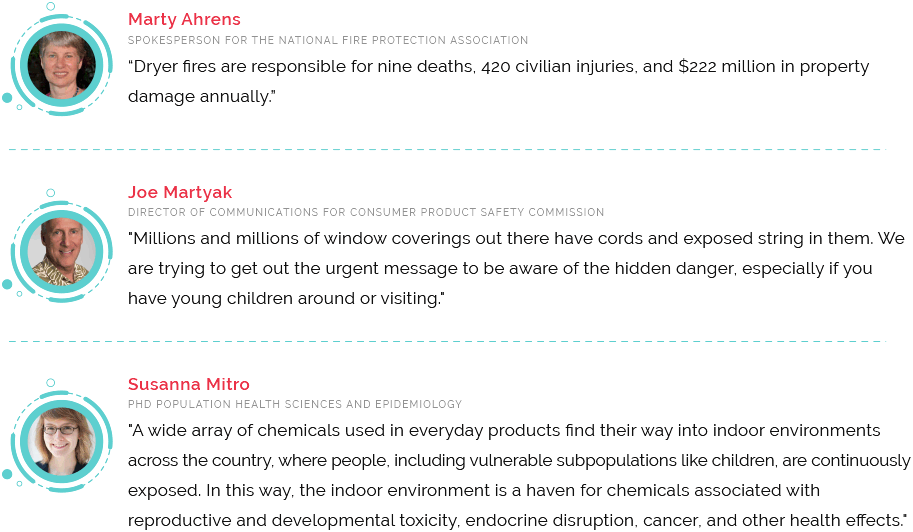

 Keep the floors dry to
Keep the floors dry to  Keep sturdy step stools to use when reaching for things in closets or the top kitchen cabinets.
Keep sturdy step stools to use when reaching for things in closets or the top kitchen cabinets. Use
Use  Use soft and protective mats under play equipment.
Use soft and protective mats under play equipment. Teach kids under 6 years of age to avoid climbing on bunk beds.
Teach kids under 6 years of age to avoid climbing on bunk beds. Add non-slip rubber mats in your bathroom to avoid slipping after a shower.
Add non-slip rubber mats in your bathroom to avoid slipping after a shower. Make sure that staircases are well-lit, are clear of clutter, do not have loose carpeting, and have the appropriate handrails.
Make sure that staircases are well-lit, are clear of clutter, do not have loose carpeting, and have the appropriate handrails. Install a light on the basement stairway, and paint the steps a brighter color to make them more visible.
Install a light on the basement stairway, and paint the steps a brighter color to make them more visible. Be careful around
Be careful around Clear your outdoor steps as soon as possible after it snows. Grip tape is your best friend to make surfaces less slippery.
Clear your outdoor steps as soon as possible after it snows. Grip tape is your best friend to make surfaces less slippery. Secure cabinets and drawers from toddlers and young children. Options include
Secure cabinets and drawers from toddlers and young children. Options include Require children riding bikes or skateboards to wear approved helmets at all times.
Require children riding bikes or skateboards to wear approved helmets at all times. Install ample lights throughout your home. Dim lighting is a
Install ample lights throughout your home. Dim lighting is a 
 Keep candles and other sources of open flames out of reach of children and away from anything flammable. If possible,
Keep candles and other sources of open flames out of reach of children and away from anything flammable. If possible,  Stay with your food when you cook. Cooking mishaps are the number one cause of fires, and a fire is most likely to occur when the stove is unattended.
Stay with your food when you cook. Cooking mishaps are the number one cause of fires, and a fire is most likely to occur when the stove is unattended. Use the back burners of stoves so children can't accidentally knock over pots or grab something hot.
Use the back burners of stoves so children can't accidentally knock over pots or grab something hot. Keep chimneys and dryer exhausts well-ventilated and free of flammable buildup by cleaning them regularly.
Keep chimneys and dryer exhausts well-ventilated and free of flammable buildup by cleaning them regularly. Install and maintain smoke detectors throughout your home. The NFPA reports that nearly
Install and maintain smoke detectors throughout your home. The NFPA reports that nearly Test smoke detectors at least once a month to ensure the batteries still work. Replace batteries once or twice a year. Even if you use hardwired detectors or sealed, long-life batteries that work for 10 years, it’s still a good idea to test your detectors frequently.
Test smoke detectors at least once a month to ensure the batteries still work. Replace batteries once or twice a year. Even if you use hardwired detectors or sealed, long-life batteries that work for 10 years, it’s still a good idea to test your detectors frequently. Keep space heaters at least a few feet away from anything flammable, like blankets, clothing, and curtains.
Keep space heaters at least a few feet away from anything flammable, like blankets, clothing, and curtains. Keep fire extinguishers in common areas like the kitchen, near the fireplace, and near other sources of heat.
Keep fire extinguishers in common areas like the kitchen, near the fireplace, and near other sources of heat. Keep the water heater at a low temperature of 120 degrees or less. At higher temperatures,
Keep the water heater at a low temperature of 120 degrees or less. At higher temperatures,  Keep curling and clothes irons out of reach of children, and away from ledges, electrical wiring, and flammable materials.
Keep curling and clothes irons out of reach of children, and away from ledges, electrical wiring, and flammable materials.
 Gate your pool off properly. That means four-sided fencing with a self-closing and self-latching gate around the pool. Check local laws to ensure the gate is up to code.
Gate your pool off properly. That means four-sided fencing with a self-closing and self-latching gate around the pool. Check local laws to ensure the gate is up to code. Keep the gate locked at all times to further ensure children
Keep the gate locked at all times to further ensure children  Attend to babies or toddlers in the bathtub 100% of the time. Never leave them alone.
Attend to babies or toddlers in the bathtub 100% of the time. Never leave them alone. Do not leave large open containers of water in the yard or in the house unattended. Examples of these containers include cleaning buckets and kiddie pools. Even open coolers pose a risk if their ice has melted into water.
Do not leave large open containers of water in the yard or in the house unattended. Examples of these containers include cleaning buckets and kiddie pools. Even open coolers pose a risk if their ice has melted into water. Cover hot tubs all the time and secure the covers so they don’t slip off easily.
Cover hot tubs all the time and secure the covers so they don’t slip off easily. Check and replace all drain covers in a pool. Drains have powerful suction that can keep even adults underwater if a drain cover is broken or removed entirely.
Check and replace all drain covers in a pool. Drains have powerful suction that can keep even adults underwater if a drain cover is broken or removed entirely. Do not interact with pools or bathtubs when consuming alcohol or prescription drugs.
Do not interact with pools or bathtubs when consuming alcohol or prescription drugs.
 Put
Put  Use cribs with a
Use cribs with a Keep plastic bags out of a child’s reach. Children are at risk of getting the bags wrapped around their heads and suffocating themselves.
Keep plastic bags out of a child’s reach. Children are at risk of getting the bags wrapped around their heads and suffocating themselves. Choose the firmest mattress you can get. Check that it springs back quickly and fits well in the crib. There should be no spaces for a baby to slip in between the mattress and crib. Avoid keeping anything else in the crib of a child younger than 1 year. That’s especially true for soft items such as
Choose the firmest mattress you can get. Check that it springs back quickly and fits well in the crib. There should be no spaces for a baby to slip in between the mattress and crib. Avoid keeping anything else in the crib of a child younger than 1 year. That’s especially true for soft items such as Make sure children chew their food thoroughly and don't swallow large bites. Cut up a child's food into
Make sure children chew their food thoroughly and don't swallow large bites. Cut up a child's food into  Inspect toys and stuffed animals for small pieces that could come off easily.
Inspect toys and stuffed animals for small pieces that could come off easily. Check the ground regularly for small items like bits of toys, hard foods, marbles, and jewelry that children could easily choke on.
Check the ground regularly for small items like bits of toys, hard foods, marbles, and jewelry that children could easily choke on. Avoid serving peanuts, seeds, popcorn, chewing gum, whole grapes, and hard candy to children younger than 4 years (ideally until about age 7). Cut hot dogs and sausages lengthwise and then a second time into smaller pieces to make them safer.
Avoid serving peanuts, seeds, popcorn, chewing gum, whole grapes, and hard candy to children younger than 4 years (ideally until about age 7). Cut hot dogs and sausages lengthwise and then a second time into smaller pieces to make them safer. Keep all window cords tied down, with ends cut so they aren't a loop. It is best to get cordless blinds.
Keep all window cords tied down, with ends cut so they aren't a loop. It is best to get cordless blinds. Do not put necklaces and headbands on infants.
Do not put necklaces and headbands on infants. Avoid hanging bags and purses on chairs, cribs or anywhere a toddler could reach.
Avoid hanging bags and purses on chairs, cribs or anywhere a toddler could reach. Do not tie pacifiers around a baby's neck or clothing.
Do not tie pacifiers around a baby's neck or clothing. Cut drawstrings on hoodies, waistbands, and other clothing items for your children.
Cut drawstrings on hoodies, waistbands, and other clothing items for your children. Keep an eye on babies in a stroller, as they could end up getting stuck in the straps and strangled.
Keep an eye on babies in a stroller, as they could end up getting stuck in the straps and strangled.
 Keep household cleaning supplies, paints, and other chemicals high up on shelves or in a shed
Keep household cleaning supplies, paints, and other chemicals high up on shelves or in a shed  Get family members and pets out of a room before you use pesticides in it.
Get family members and pets out of a room before you use pesticides in it. Store medicines and vitamins out of children’s reach. Avoid placing them on countertops or tables where kids can easily get to them.
Store medicines and vitamins out of children’s reach. Avoid placing them on countertops or tables where kids can easily get to them. Lock away loose or spare batteries, since they pose poisoning and choking risks. Take special care with
Lock away loose or spare batteries, since they pose poisoning and choking risks. Take special care with Check that visitors keep their medicines secure in their purse. Children are relentless sometimes and feel no shame going through other people's belongings, especially if bags are wide open.
Check that visitors keep their medicines secure in their purse. Children are relentless sometimes and feel no shame going through other people's belongings, especially if bags are wide open. Do not use old drink bottles or food containers to store household cleaners or toxic chemicals. This confuses both children and adults.
Do not use old drink bottles or food containers to store household cleaners or toxic chemicals. This confuses both children and adults. Close the packaging to any chemical or medication before leaving, even for just a minute.
Close the packaging to any chemical or medication before leaving, even for just a minute. Be responsible with medications and
Be responsible with medications and Install a working carbon monoxide detector to alert you if the CO levels at home get dangerously high. Carbon monoxide is sneaky since it’s
Install a working carbon monoxide detector to alert you if the CO levels at home get dangerously high. Carbon monoxide is sneaky since it’s  Turn off gas stoves before leaving the kitchen.
Turn off gas stoves before leaving the kitchen. Beware of
Beware of